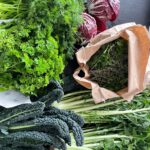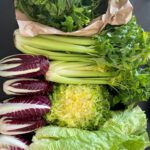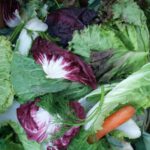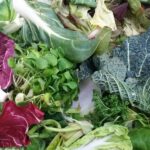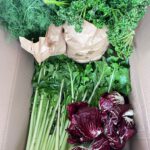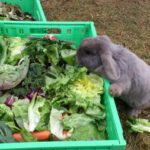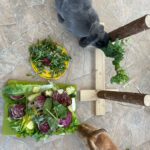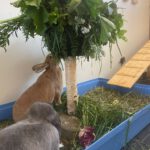There are many different ways to change a rabbit’s diet.
What’s important is to make the transition slowly, so that the gut bacteria can adapt to the new food and digest it properly. Otherwise, digestive issues may occur.
That’s why the only method I generally cannot recommend is an abrupt change of diet.
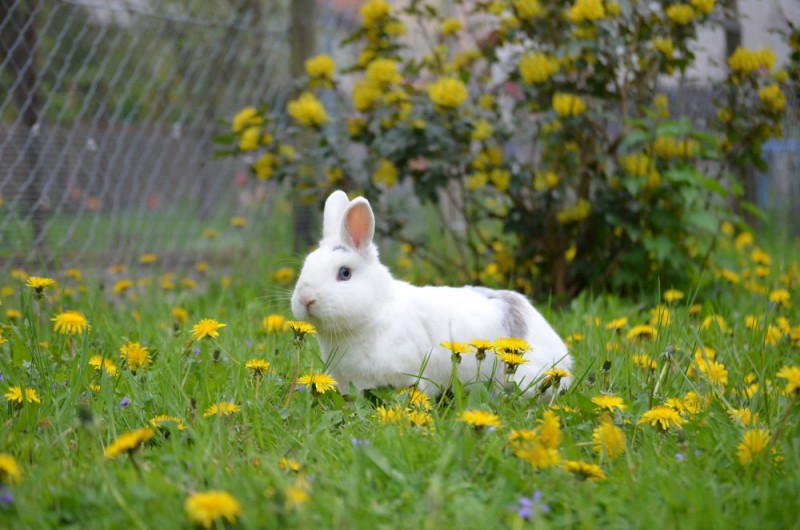
Contents
Rule out allergies and intolerances
When introducing a completely new food, it’s best to start with a small amount to see if the rabbit tolerates it. Some rabbits may have intolerances or allergies, which can often be identified this way.
If the food is well tolerated, it can then be introduced gradually as part of the regular diet.
Gradually Transitioning Your Rabbit to a New Diet
When switching your rabbit from dry food to fresh food—or transitioning to a natural diet after bringing them home—it’s important to do so gradually. If the rabbits are new, first ask the previous owner what they were fed. If they received dry food, it’s helpful to take a small amount with you to ease the transition.
If the diet change coincides with a move to a new home, it’s best to wait two to three days to allow your rabbits to adjust to their new environment before beginning the transition.
Start by offering each new food in a small amount to check for any signs of allergies or intolerances. Once the food is tolerated, you can proceed with one of the following methods:
Step-by-step replacement: Each day, increase the amount of new food while reducing the old food proportionally—for example, double the new and halve the old.
Introduce new food first: Slowly increase the quantity of new food to a substantial amount before beginning to reduce the old food.
Seed substitution method: Replace dry food with an equivalent amount of seeds (such as grains), then gradually reduce the seeds over time. This method is usually well tolerated and supports healthy digestion throughout the transition.

Diarrhea During Diet Transition?
When transitioning rabbits from commercial dry food to a natural diet, it’s important to note that not all fresh foods are immediately well tolerated. A common issue is digestive upset—especially diarrhea—when dry and fresh foods are combined.
To minimize this risk, start with mild, easily digestible fresh foods. More sensitive items such as cabbage, clover, or alfalfa should only be introduced after dry food has been fully removed from the diet.
Keep in mind that diarrhea during a diet change can also indicate underlying dental problems. If your rabbit otherwise seems alert and in good condition, observe whether the diarrhea resolves by the next day. If it does, slow down the introduction of new foods.
If it persists, consult your veterinarian to check the teeth and submit a three-day fecal sample for testing—looking specifically for coccidia, yeast, and worms.

Many dental issues remain hidden while rabbits are on dry food, as:
- Pellets absorb water, masking symptoms like diarrhea.
- Dry food is finely ground, requiring little chewing—so dental wear is inadequate, and problems go unnoticed.
- Fresh food reveals these issues, as it demands proper chewing and stimulates natural digestion.
Veterinarian Dr. Anja Ewringmann explains in „Key Symptoms in Rabbits“:
“Rabbit owners often report avoiding fresh food because it causes diarrhea. However, in most cases, the true cause is a latent dental disorder. Poorly chewed fruits and vegetables ferment more quickly than dry food. With regular dental care, these rabbits can usually return to a species-appropriate diet.”
Dietary Transition for Sensitive Rabbits
Rabbits that have been fed an inappropriate diet for most of their lives—or suffer from chronic digestive issues—often need a gentle preparatory phase before fully switching to a natural diet. This phase acts as a kind of digestive reset, allowing the gut to recover and stabilize.
We recommend the following supportive starter diet, which can usually be introduced immediately and without a gradual transition, even in sensitive rabbits:
- High-quality hay and leaves (fresh or dried) – particularly oak leaves, which support healthy digestion
- Fresh twigs and branches – including conifer branches (e.g., pine, spruce)
- Aromatic herbs and seeds – such as fennel, anise, and caraway
- Mild wild herbs – such as dandelion greens and fresh grass, introduced in moderation
After a few days on this basic diet, begin carefully introducing other fresh foods one at a time, spaced every two days, and in small amounts to check for tolerance. Suitable first options include:
- Endive
- Chicory
- Dandelion leaves
- Parsley root
- Grated apple (very small amount)
- Carrot (also in very small quantities)
This structured approach provides sensitive rabbits with the digestive support they need while gently guiding them toward a balanced, natural diet.




